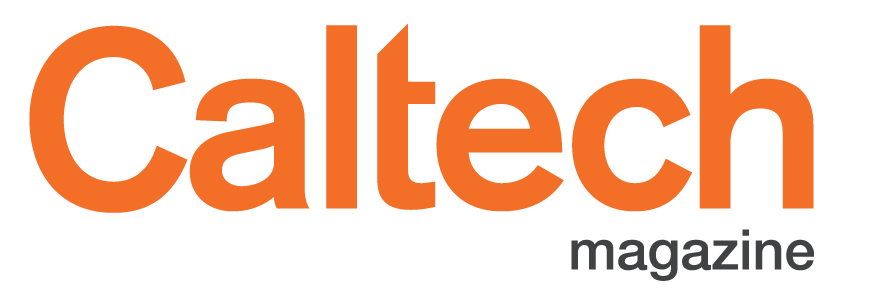Computer, Start Your Engine
Image by Matthew Anderson
By Omar Shamout
Caltech has a long history of success in out-of-the-ordinary car races. In the Great Electric Car Race of 1968, Caltech’s battery-powered Volkswagen bus beat MIT’s plug-in Chevy Corvair in a cross-country contest. In 1987, the Sunraycer, a joint collaboration between General Motors, AeroVironment, and Hughes Aircraft whose design, construction, and racing teams featured a host of Institute alums, won the World Solar Challenge, the first-ever race featuring solar-powered cars.
Now, the Institute can add another achievement to its list. In January 2025, the Caltech Racer made its debut by competing in the Indy Autonomous Challenge (IAC) at the Las Vegas Motor Speedway.
The racer—an IAC AV-24 IndyCar retrofitted with autonomy hardware and Caltech’s control algorithms that allow for autonomous engine/brake control, steering, and navigation—reached a top speed of 155 miles per hour and an average lap speed of more than 144 miles per hour. The roughly 10-person team comprised faculty members, students, postdocs, and staff from Caltech’s CAST (Center for Autonomous Systems and Technologies) who notched the impressive high-speed record even though they only formed the full team and started testing in October 2024.
“We are happy with what we achieved because it set a good baseline, so that we can incorporate our advanced autonomy and AI-based software in the next competition. It has taken other teams a few years to reach that speed,” says Soon-Jo Chung, the Caltech Racer’s team leader, the Institute’s Bren Professor of Control and Dynamical Systems and a senior research scientist at NASA's JPL, which is managed by Caltech.
Also competing in the race were teams from UC Berkeley, Purdue University, the University of Virginia, Auburn University, Indiana University, Italy’s Polytechnic University of Milan and the University of Modena and Reggio Emilia, as well as the Korea Advanced Institute of Science and Technology.
Every team in the competition received a functional drive-by-wire IndyCar that they could program for high-speed autonomous driving. After Caltech’s IndyCar was delivered in September, the CAST team installed and tested its autonomous driver system, which analyzes data from onboard technology that includes two GPS systems, three LiDAR (Light Detection and Ranging) sensors, inertial measurement units, two radar sensors, and six color cameras.
“With such a high-speed racer, every worst-case scenario for AI-based software is amplified, like road-induced perturbations and turbulence,” Chung says. “Everything becomes more challenging. For example, we actually experienced strong winds in Las Vegas, which blew over our heavy monitors and desks. Our racer is best equipped to handle such challenging perturbations because we can utilize our prior machine-learning-based core algorithms to make control decisions a lot faster and safer.”
Though the racer was fully autonomous during the competition, autonomous driving is built on human skills, particularly in the areas of data collection and AI software refinement. Caltech staff scientist Matt Anderson, who helped develop the AI software and manage the team, steered the racer during the team’s test-drive days on the track. Anderson would ride in the passenger seat of a chase car and assume control of the million-dollar vehicle when it encountered any sudden problems. He did so with a very familiar piece of equipment. “I drive it with a small Xbox controller,” Anderson says. “I’ve been using one since my parents let me play video games, so I have 30-plus years of experience with it.”
The project is also co-led by two other Caltech faculty members, Fred Hadaegh, research professor in aerospace and a senior research scientist and technical fellow at JPL, as well as Mory Gharib, the Hans W. Liepmann Professor of Aeronautics and Medical Engineering, director and Booth-Kresa Leadership Chair of CAST, and director of the Graduate Aerospace Laboratories of the California Institute of Technology. Funding was provided by CAST, Beyond Limits (a Caltech/JPL spinout), and Aramco, among others.
Next up for the racer is a competition at the WeatherTech Raceway Laguna Seca in Salinas, California, in July 2025.
*A previous version of this story referred to the “Caltech Sunraycer” in error. The story has been updated to reflect the parties involved in its creation.

